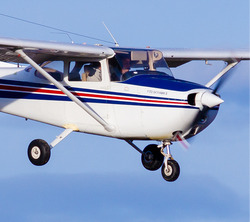Subscriber question:
"Do you have any tips for a partial power loss in flight? I just read that's more common than total power loss, but I've never practiced it." —Tim R.
Wally:
 “Well, I guess we can say at least that a partial power loss is better than a total power loss. At least we have a few more options.
“Well, I guess we can say at least that a partial power loss is better than a total power loss. At least we have a few more options.
My first thought is to undo whatever it was that you most recently did. If you just switched fuel tanks, switch back. If you just leaned, enrich the mixture … you get the idea. The next step is to try all the troubleshooting items on your engine failure checklist. You need to develop a flow pattern that covers all the items. This is not the time to start looking for the checklist. These items must be in long-term memory.
Remember as you lose power the nose will drop as the airplane wants to maintain its trim speed, so you need to start applying back pressure on the elevator and began slowing to best glide speed. Don’t give away a bunch of altitude while you are doing your checking. Altitude means options and at a time like this options are good.
If you have been playing the what if game, you already know what direction the nearest airport is, so turn in that direction as you are troubleshooting and trimming. If you are not always thinking about where you would go if you developed an engine problem, you are not doing your job as PIC.
If you can’t solve your problem, hold your altitude until the airplane slows to best glide speed and see if you have enough power to maintain altitude. If so, limp along to the nearest airport. Even a little bit of power will extend your glide significantly, so maintain best glide and conserve as much altitude as possible. Of course, that engine could quit at any time, so as you progress, keep picking out forced landing possibilities.
Arrive over your airport as high as you can, then maneuver to set yourself up for a normal pattern with a downwind leg at approximately 1000 feet above field elevation. Now if you have previously practiced power-off landings from this position you are in good shape. Be careful not to get too high and fast on the approach, but also remember that once you close that throttle, you may not get any power back.
Naturally, getting help from ATC and declaring an emergency, time permitting, is helpful; but most of the work is up to you.
So in summary, know your flow pattern for troubleshooting your engine problems, maintain situational awareness, be able to trim and fly your aircraft at best glide speed and practice power-off landings from the downwind leg. Doing these things will significantly improve your odds of a safe landing.”
Listen to four all-star instructors share thoughts about partial power loss.
Have you ever experienced a partial power loss or rough engine that caused you to make a precautionary or emergency landing?
